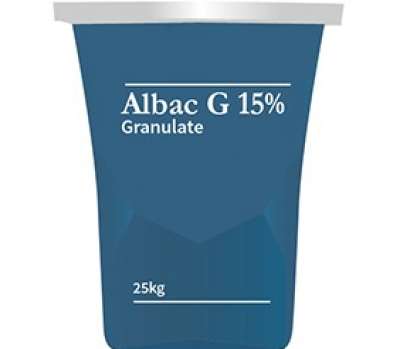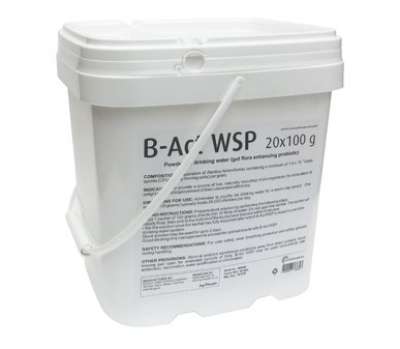Bacterial Enteritis and Dysbacteriosis in Poultry
The lining of the gut has the largest surface area in contact with the ‘outside world’ relative to any other organ system including the airways or skin and comprises approximately 80% of the immune system capacity of an animal. It is also the supply organ system responsible for fuelling growth and maintenance. As such, it is important to consider the condition and potential for function or inflammation state of the gut to assess its capacity to supply and consume nutrients.
Bacterial enteritis and dysbacteriosis are broad terms used to describe abnormal intestinal microflora balance and inflammation and includes necrotic enteritis. Such intestinal conditions are able to be used as indicators of overall gut health and may or may not be associated with coccidiosis in poultry. The severity of dysbacteriosis or bacterial enteritis may be used as an indicator of the gut’s ability to perform adequately to supply nutrients for maintenance and production.
Signs of dysbacteriosis and bacterial enteritis are associated with the condition of the gut itself (thickness, musculature and tone, colour, healthy lining) and the contents therein (water content, presence of mucous, appearance of digesta), and a handy scoring guide can be found here. A score is assigned to anomalies in the gut and its contents and may be used to determine an overall dysbacteriosis score (De Gussem 2010, Teirlynck et al 2011) which can be used to assess the suitability of gut health management mitigation measures (changes to formulation, house management, prophylaxis or therapeutic treatment).
Microflora ecology and age of bird, coccidiosis, feed formulation, stress, access to feed, antinutritional factors and the presence of microflora manager compounds can affect the prevalence bacterial enteritis and dysbacteriosis in the flock. Feed enzymes such as OptiPhos Plus and Hostazym X are able to reduce the impact of antinutritional factors, and ACVM registered microflora management products such as Albac G 15% granulate, Flavomycin 40 microGranulate, B-Act premix microGranulate and B-Act Soluble are able to reduce the prevalence of potentially pathogenic bacteria in the gut.
Routine dysbacteriosis scoring should be conducted throughout the life of the flock to drive management decisions for improved gut health and therefore optimum flock welfare and performance. Contact your veterinarian to conduct dysbacteriosis scoring in your flock and supervise gut health improvement strategies.
Bacterial Enteritis and Dysbacteriosis in Poultry
The lining of the gut has the largest surface area in contact with the ‘outside world’ relative to any other organ system including the airways or skin and comprises approximately 80% of the immune system capacity of an animal. It is also the supply organ system responsible for fuelling growth and maintenance. As such, it is important to consider the condition and potential for function or inflammation state of the gut to assess its capacity to supply and consume nutrients.
Bacterial enteritis and dysbacteriosis are broad terms used to describe abnormal intestinal microflora balance and inflammation and includes necrotic enteritis. Such intestinal conditions are able to be used as indicators of overall gut health and may or may not be associated with coccidiosis in poultry. The severity of dysbacteriosis or bacterial enteritis may be used as an indicator of the gut’s ability to perform adequately to supply nutrients for maintenance and production.
Signs of dysbacteriosis and bacterial enteritis are associated with the condition of the gut itself (thickness, musculature and tone, colour, healthy lining) and the contents therein (water content, presence of mucous, appearance of digesta), and a handy scoring guide can be found here. A score is assigned to anomalies in the gut and its contents and may be used to determine an overall dysbacteriosis score (De Gussem 2010, Teirlynck et al 2011) which can be used to assess the suitability of gut health management mitigation measures (changes to formulation, house management, prophylaxis or therapeutic treatment).
Microflora ecology and age of bird, coccidiosis, feed formulation, stress, access to feed, antinutritional factors and the presence of microflora manager compounds can affect the prevalence bacterial enteritis and dysbacteriosis in the flock. Feed enzymes such as OptiPhos Plus and Hostazym X are able to reduce the impact of antinutritional factors, and ACVM registered microflora management products such as Albac G 15% granulate, Flavomycin 40 microGranulate, B-Act premix microGranulate and B-Act Soluble are able to reduce the prevalence of potentially pathogenic bacteria in the gut.
Routine dysbacteriosis scoring should be conducted throughout the life of the flock to drive management decisions for improved gut health and therefore optimum flock welfare and performance. Contact your veterinarian to conduct dysbacteriosis scoring in your flock and supervise gut health improvement strategies.
Albac G 15% Granulate

AviApp

B-Act 100

B-Act Soluble
